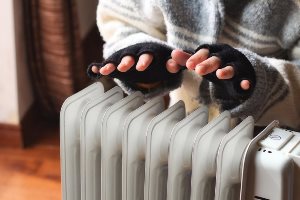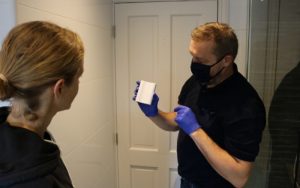Internet of Things: Removing fuel poverty from the social housing equation

IoT home sensors, with their real-time ability to aid in maintaining a healthy home, are making a difference in residential safety. This is being demonstrated in the UK’s social housing system designed to provide an affordable and stable option to people across the country but not necessarily the silver bullet many had hoped it would be. Rents tied to local incomes may seem much more manageable but having four walls and a roof overhead is only part of the solution. Renters still have related living expenses to consider, including utilities like water, electricity, and heat. Decisions around these and other bills can produce their own set of issues, causing some tenants to get ‘creative’ or tight-fisted with their spending. And leave them vulnerable to less-than-adequate living conditions, says Kjell Karlsson, managing director, connectivity, TT Electronics.
New legislation has been ratified in response, and smart home technology is being utilised to keep residents safe across the country. The Homes (Fitness for Human Habitation) Act is causing housing associations to take action by employing the internet of things (IoT), which provides data and analysis to solve common issues that may arise. Landlords can use IoT-powered monitoring to address their tenants’ welfare quickly while also assessing building maintenance and legal compliance. Paired with access to ‘on-the-ground’ energy experts, residents have support in helping them make intelligent changes to conserve energy while minding cost, health, comfort, and safety.
Health and safety: the goal of smart tech
Consider that sufficient heating is a universal necessity often sacrificed by residents looking to economise. Though common knowledge suggests the cold may be countered with extra clothing and blankets, inadequate warmth can seriously compromise people’s health and safety. Still, it is not unheard of for temperatures in social housing to be set below 13°C, creating a precarious situation for tenants.

Having up-to-date access to this type of information allows landlords to offer a safe living environment. Using IoT monitoring systems, illustrated by the Healthy Homes Sensor developed by TT Electronics and Zap Carbon, real-time feedback provides information about the current conditions in a particular residence. Data gathered by sensors in the home is transferred to a central server, where it is analysed for uncommon patterns. Using artificial intelligence, algorithms comb through vast amounts of data to determine areas of concern within the residence. The sensors can even notify affected tenants and their landlord via text alert about unhealthy situations inside the unit.
New tech solves old problems
Conditions within a home are caused mainly by life inside that home. This includes daily routines followed by every household. Numerous everyday actions such as showering, washing the dishes, and even taking a breath can result in excess humidity. Water vapor from these activities then dampens walls, ceilings, and furniture, sometimes even leaving physical damage. More importantly, repeated exposure to moisture can pose an increased health risk to children, the elderly, and those with existing conditions such as allergies, asthma, and breathing difficulties.
Insufficient ventilation, which allows harmful humidity levels to form, can worsen these conditions. Unfortunately, this is common, especially in places where multiple people live together in the same room in an effort to economise.
The lack of heat, inadequate ventilation, and humidity creates the ideal environment for mould to form and it can go undetected for months, sometimes even years. Mould, along with low temperatures and high humidity, are likely to compromise tenant health. Furthermore, these factors can prove detrimental to the rental value and add cost to restore the unit.
Healthy life; happy resident

Kjell Karlsson
Tenants can have peace of mind with With instant alerts and suggestions to maintain safe temperatures and ventilation levels, the system is constantly working to ensure a healthy environment. Avoiding contact with unsafe humidity levels can help reduce health issues such as respiratory problems and asthma, leading to healthier residents.
Having access to the correct information is crucial to successfully completing any task. Not only is the IoT a master of data collection within the home but, with its real-time analysis and decision-making capabilities, it supports a healthier home environment. The simple design offers housing associations a cost-effective system with minimal impact on tenants. Due to its simplicity and affordability, IoT technology can maintain the safety of those who need it most. By securing the welfare of those residents, IoT monitoring creates positive social impact throughout the UK.
The author is Kjell Karlsson, Managing Director, Connectivity, TT Electronics.
About the author
Kjell leads the TT Electronics Connectivity design centre in Kista, Sweden and has over 20 years’ experience in the global wireless electronics sector.
Comment on this article below or via Twitter @IoTGN
